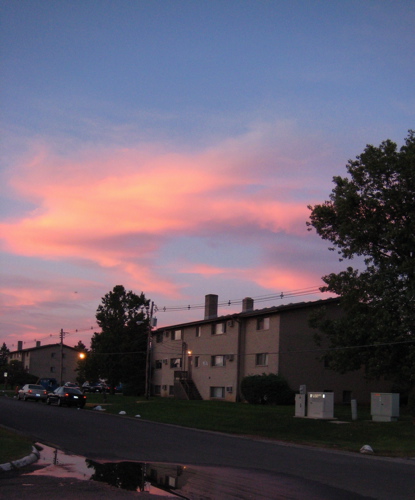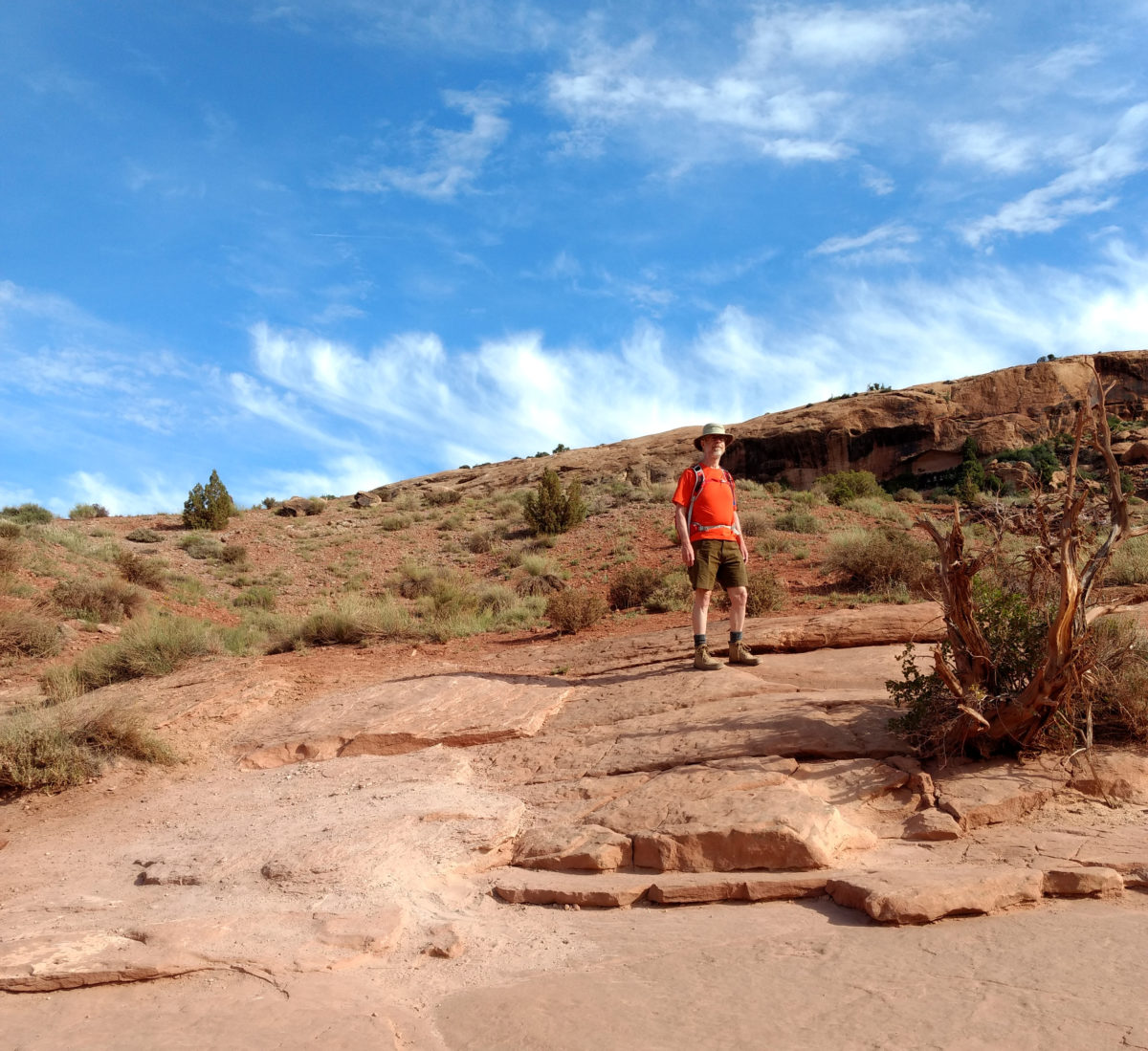I often claim that I like hot weather, to the point that I don’t mind exercising in the heat. However, the best thing about hot weather is that it gives me an excuse to sit in the shade, read, and drink beer.


Our first look at the lease from new owner of Country Fair Apartments made it clear that they would ruin the place—a place we’d lived happily for 20 years—so we moved out. Even so, I’m a little surprised to see this just 8 years later:
Because the heat is not working, 9 out of 42 buildings are considered unlivable…. If the property owners don’t fix the issues in a timely manner, tearing down the buildings may be the next step.
https://foxillinois.com/news/local/tenants-living-without-heat-at-apartment-complex-court-steps-in

In happier times.
When you feel sick, you prefer to sit still. This behavior pattern is not only well known, it even has a name: “inflammatory-induced sickness behavior.”
In the modern world this easily leads to a particularly pernicious vicious cycle. Modern lifestyles lead to metabolic syndrome. Metabolic syndrome produces systemic inflammation, which makes you feel like sitting still. Wanting to sit still makes what would otherwise be the most potent tool for reducing systemic inflammation—exercise—tough to bring to bear.
This rather dense article from back in 2010 describes the problem: Inflammatory modulation of exercise salience: using hormesis to return to a healthy lifestyle. It also proposes a category of solutions: hormesis. That is to say, any of a set of mild metabolic stresses that prompt a response greater than “just enough” to stave off the damage produced by the stress itself.
The result is less systemic inflammation, and therefore less inflammatory-induced sickness behavior, hence an increased inclination to move.
Or, as they say:
We therefore propose that exercise salience, the motivation to undertake physical activity, is modulated by the inflammatory status of an animal, decreasing in an inflammatory phenotype, including the metabolic syndrome and increasing in an anti-inflammatory “healthy” phenotype. The type of phenotype may well be determined by the degree of hormesis, as metabolic stressors, such as exercise, plant polyphenols and calorie restriction tend to induce an anti-inflammatory phenotype.
Besides exercise, the article suggests two other broad categories of available hormetins.
One is related to food, and consists of the obvious stuff that everybody knows: Avoid industrially produced edible substances. Consider such modalities as time-restricted eating, calorie restriction, or fasting. Include foods rich in plant polyphenols. (In other words, “Eat food, not too much, mostly plants.”)
The other is related to temperature: Expose yourself to mild cold and/or heat stress. (Spend time outdoors in the winter. Take a cold shower. Spend time outdoors in the summer. Take a sauna.)
Each of these things will produce some mild metabolic stress. As long as you don’t overdo it, that mild stress will produce a stress response greater than necessary to handle the stress itself, with the side-effect of bringing down systemic inflammation. With the systemic inflammation eased, you’ll start feeling like moving again. That puts the potent tool of exercise back on the table.
Nature has a more recent article on all this stuff, which is sadly behind a paywall.

Bubbles likes the heat. Look how lively she is!

I have always enjoyed exercising in the heat. In this I seem to be different from most people.
I originally took note of this fondness back in the early 1980s when I was living in Ft. Lauderdale. A ritzy local tennis club—way too expensive for me—offered summer memberships for just $100. I just got access to the outdoor courts and not to the indoor amenities, but all I wanted was a place where I could reserve a court and know that it would be available when I met someone there. The only downside was that you were playing tennis outdoors, in the summer, in Ft. Lauderdale. And it turned out I was okay with that.
I’m pretty careful not to be stupid about it. (And successfully so, it seems—I’ve never gotten heat exhaustion or heat stroke.) If I start feeling tired, thirsty, or overheated, I slow down, move to the shade, and drink some cold water.
Over the years I’ve had a variety of theories about why I didn’t mind exercising in the heat when other people hate it so much. I like to imagine that I’m just better at tolerating the heat than the average person: Everyone slows down in the heat, but maybe I slow down slightly less; at some high temperature, maybe I’d become competitive! More likely, since I’m not competitive I’m not making unfavorable comparisons between my speed in the heat versus my speed in cool weather, so the fact that I slow down doesn’t make me unhappy.
Recent research has given me a new, much more likely reason why I like exercising in the heat. On Rhonda Patrick’s Found My Fitness podcast, I heard an interview with Dr. Charles Raison, in which he described the results of a study suggesting that Whole-Body Hyperthermia was an effective treatment for depression. The experiment used infrared lights to heat people up to a core body temperature of 38.5℃ (101.3℉), but Raison is convinced that there is nothing special about the device used, and that a sauna, hot spring, sweat lodge, hot yoga—or just exercising in the heat—would have the same antidepressant effect.
Dr. Raison is studying further to try to elucidate the mechanism by which hyperthermia boosts mood in depressed people. (It seems to reduce inflammation, perhaps by boosting IL-6 which activates IL-10. Heat Shock Proteins might also be involved, since they do all sorts of things.)
I have always been inclined to blame a lack of daylight for the seasonal depression that I’m prone to suffer from during the winter—both too short of a photo-period (which I address with a HappyLight™) and too little vitamin D (which I address with vitamin D supplements), but it now occurs to me that a lack of opportunity to exercise in the heat (and thereby raise my core body temperature high enough to trigger whatever it is that reduces depression) may be an independent factor.
It seems very likely that, just like my desire to spend time outdoors in daylight is probably self-medicating to boost my vitamin D and regulate my circadian rhythm, my desire to exercise in the heat is probably self-medicating to boost my mood.
I hesitate to rejoin a fitness center just to get access to a sauna, but I’ll have to investigate options for access to winter whole-body hyperthermia.